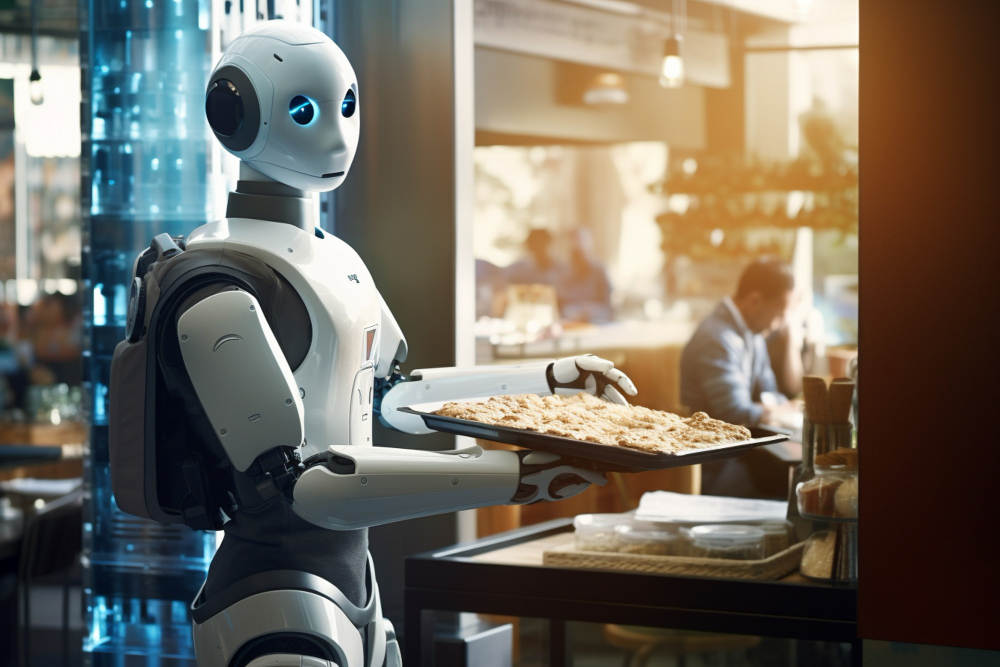How AI is Reshaping the Future of Restaurant Customer Experience in 2025
Introduction AI in the restaurant industry is no longer an emerging trend—it’s a strategic necessity. As customer expectations evolve and...

Introduction
AI in the restaurant industry is no longer an emerging trend—it’s a strategic necessity. As customer expectations evolve and competition tightens, restaurants are leveraging artificial intelligence to streamline operations, personalize service, and boost profitability. In 2025, AI is not just powering back-end systems—it’s directly shaping the way customers interact with restaurants across every touchpoint.
This blog explores how AI in the restaurant industry is enhancing customer experience and revolutionizing the way food businesses operate in today’s digital-first world.
Smart Ordering Systems
One of the most visible implementations of AI in the restaurant industry is the rise of smart ordering systems. AI chatbots, voice assistants, and self-service kiosks are now commonly used to take orders with speed and precision. These systems can understand customer preferences, reduce wait times, and even recommend complementary menu items based on past behavior.
By automating this process, restaurants reduce human error and ensure a smoother, faster dining experience.
Hyper-Personalization at Scale
AI in restaurant industry is making hyper-personalization scalable for businesses of all sizes. Restaurants now use AI algorithms to analyze customer data—such as order history, time of visit, and dietary restrictions—to deliver personalized menu suggestions.
For example, if a customer frequently orders vegan meals, the system can automatically highlight plant-based options. Personalized deals and loyalty rewards also help build customer engagement and repeat visits.
AI-Powered Reservation and Table Management
Efficient table management is a critical component of delivering a great dining experience. AI in the restaurant industry has enabled intelligent reservation systems that forecast demand, predict no-shows, and dynamically adjust seating layouts to optimize occupancy.
These systems improve waitlist management and provide real-time updates to staff and customers, reducing frustration and increasing table turnover rates.
Contactless Dining and Smart Payments
AI is playing a major role in contactless dining, a necessity in the post-pandemic restaurant environment. Customers can now browse digital menus, place orders, and make payments through AI-enhanced platforms without direct human interaction.
Smart payment systems also recognize returning customers, apply loyalty points automatically, and support voice or biometric authentication for secure transactions. This makes AI in the restaurant industry a key driver of both convenience and safety.
Real-Time Customer Feedback and Sentiment Analysis
Understanding how customers feel is essential to improvement. AI in the restaurant industry allows brands to collect and analyze customer sentiment through surveys, online reviews, and social media interactions.
AI tools detect patterns in feedback, flag negative sentiments early, and provide actionable insights for managers. Restaurants can respond to concerns before they escalate and continuously refine their service based on real-time input.
Inventory and Supply Chain Optimization
Back-of-house efficiency is equally important. AI in the restaurant industry is being used to forecast ingredient demand, monitor stock levels, and optimize order cycles. This prevents overstocking or waste and ensures that high-demand items are always available.
By integrating AI with POS and kitchen systems, restaurants can track usage patterns and reduce costs across the supply chain.
Dynamic Pricing and Menu Engineering
Dynamic pricing, a strategy long used in hospitality and e-commerce, is now making its way into the restaurant world. AI enables restaurants to adjust menu prices based on factors such as demand, time of day, and inventory availability.
In addition, AI-driven menu engineering helps identify bestsellers, underperforming items, and seasonal trends. This data allows restaurant owners to update menus based on profitability and popularity, aligning better with customer preferences.
Kitchen Automation and Robotics
Kitchen automation is another area where AI in the restaurant industry is showing immense potential. AI systems monitor food prep times, manage kitchen workflows, and even control robotic chefs. These tools ensure consistency in food quality, reduce human error, and maintain hygiene standards.
For chain restaurants or cloud kitchens, AI helps standardize output across multiple locations, maintaining brand consistency.
Voice Technology and Multilingual Interfaces
Voice recognition technology, combined with AI, is helping restaurants provide seamless ordering experiences—especially in drive-thru and quick-service settings. Customers can place orders using natural language, and the system can understand accents, preferences, and special requests.
This also extends to multilingual interfaces, helping international or tourist-heavy establishments better serve diverse customers. AI in the restaurant industry ensures that language is no longer a barrier to great service.
AI-Driven Marketing Automation
AI is transforming restaurant marketing by enabling personalized, data-driven campaigns. Using customer behavior data, restaurants can send timely offers, loyalty reminders, and event invitations that align with a guest’s preferences and visit patterns.
Email, SMS, and push notifications are automatically optimized by AI to improve open rates, engagement, and conversion. Marketing automation powered by AI allows even small restaurants to maintain professional, always-on engagement with their customers.
The Future of AI in the Restaurant Industry
As more restaurants adopt digital solutions, AI is becoming the central nervous system of modern hospitality. From enhancing customer journeys to powering backend efficiencies, AI in the restaurant industry is enabling smarter decisions, higher margins, and superior experiences.
In the years ahead, we can expect even deeper integration of AI with wearable tech, AR-powered menus, and voice-first ordering platforms. Restaurants that begin building AI capabilities now will have a significant competitive advantage as customer expectations continue to rise.
Conclusion
AI in the restaurant industry is not just enhancing efficiency—it is redefining what customer experience looks like in a highly competitive market. With personalized service, smarter operations, and real-time insights, AI empowers restaurants to deliver memorable dining experiences at scale.
Whether you’re running a cloud kitchen or a luxury dining chain, investing in AI today can transform your customer relationships and business performance tomorrow.




